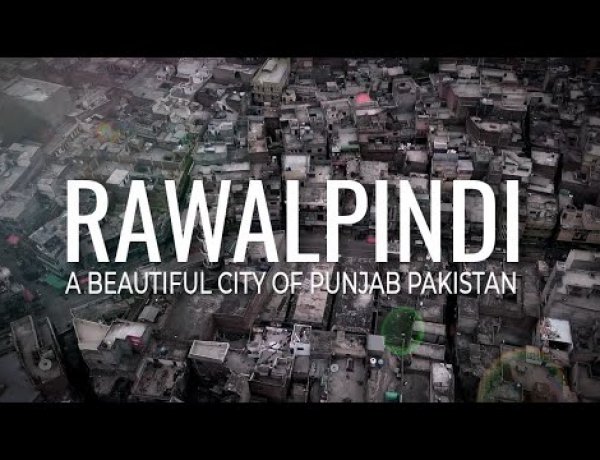The Glorious Past of Rawalpindi: A City of Quietude and Greenery
Rawalpindi was a quiet city before the 1980s with abundant underground water reserves, fresh vegetables and fruits. Murree Road was the main highway and the main bus stand of the city was Liaquat Bagh. There were no rickshaws in Rawalpindi, and the only way to get around the city was by foot or Tanga. The city had many sports grounds, gardens and historical buildings, and was once a city of Hindus and Sikhs.

It is not so long ago that Rawalpindi used to be a small and very quiet city. Until the 1980s, the city used to start from Murid Chowk and end at Sixth Road. At that time, Rawalpindi had neither the chaos of traffic nor the poor state of sanitation. Trees and plants were common in almost every small and big house. There was no shortage of water in the city due to abundant underground water reserves. Almost every second and third house used to have a well, but also a big well was common in every neighborhood from which Bahishtis, called mashki in Pindi, carried water from house to house in leather muskets. One such big well was Chah Sultan due to which the whole area became known as Sultan Da Khoh.
Fresh vegetables used to be a specialty of Rawalpindi. From the suburbs of Khanna and Tarlai, dark bullock carts came loaded with fresh vegetables and fruits. There used to be fields between today's Shamsabad and Faizabad, but many of today's densely populated areas, such as Chaklala Housing Scheme, 'Muslim Town', Airport Housing Society, etc., did not exist. All these fields were threshing floors and agricultural areas.
The main bus stand of the city used to be Liaquat Bagh which was shifted to Purodhai in 1976 or 1977. Buses used to go to different cities and towns from Liaquat Bagh.
Murree Road was the main highway of the city which was probably renamed as Mohammad Reza Shah Pahlavi Road after the Shah of Iran in 1976. There used to be plants in the middle of the road on which seasonal flowers bloomed and yes, there used to be a Chandni Chowk in Rawalpindi. In the middle of this square there was a round chaman. On the road leading from the square to the commercial market, they used to mix very tasty and good curds. The commercial market used to be a small market with open exits and wide roads. These verandahs are still there but have been torn off from the tips.
Between Chandni Chowk and the commercial market was a residential area with tall tall trees and lush green flowers and plants. Thus, Chandi Chowk used to be a pleasant walk to the commercial market. There were no rickshaws in Rawalpindi. Tanga was a popular common ride. People who ate and drank preferred the black yellow Morse taxi, but the only way to get around the city was by foot. Fawara Chowk 'Committee Chowk' Chowk Chah Sultan and Bani Chowk were big leg stands. There used to be cisterns for watering horses.
Except for a few areas, the city used to be deserted after Isha. It was not customary to eat outside the house. At night, if there was a mood to eat and drink, there was a popular dairy shop at Committee Chowk. Takke and kebab shops in College Road and Bani Mohalla were open till late at night. But they were considered unwelcome because it was believed that only vagrants and vagrants visited these places late at night.
There was a direct road from Faizabad to the airport from Islamabad, but most of the people used to go to the airport from Murree Road via Chah Sultan Chowk. Rakim Al Haruf had seen the Prime Minister of Pakistan Zulfikar Ali Bhutto coming and going to the airport on this road many times as a child. In those days, cities were not blocked off for VIP traffic. The political leadership of the city was held by educated and eminent personalities like Khurshid Hasan Mir, Javed Hakeem Qureshi, Real Sheikh Rashid Advocate and Raja Anwar.
Many important academic and literary names of the country were residents of Rawalpindi. For example, Shafiqur Rehman, Mumtaz Mufti, Syed Zameer Jafri, Colonel Muhammad Khan, Anwar Masood, Aziz Malik, Akhtar Hoshiar Puri, Aoun Rizvi, Azhar Lodhi, Jameel Malik, Professor Masood, Ikram Qamar, Nisa Akbarabadi, rather if they write, this The list will be very long.
The city had many sports grounds and gardens. There were three major grounds on Murree Road, Central Hospital Ground, Shabistan Cinema and Liaquat Bagh Ground, and every residential area had some sort of ground or park. Alas, all these encroachments and the consequences of the development have come to the fore.
Rawalpindi was important even before independence as the headquarters of the Northern Subcontinent Command of the British Indian Army. The cantonment area beyond Murid Chowk used to be lush, quiet and extremely clean. The architecture of the cantonment was prominent in the Victorian and British Raj architecture. But let's leave the mention of cantonment for another seat.
Historically, Rawalpindi was a city of Hindus and Sikhs. Almost all the ancient residential areas like Kartapura, 'Angtapura', Bagh Sardaran, 'Amrapura', Mohanpura, Arya Mohalla, Chittian Hattian' were inhabited by Hindus and Sikhs and most of the merchants and traders of the city were either Hindus or Sikhs. By the way, the beauty of the old city has deteriorated, but there are still many old houses and beautiful historical buildings. These are the historical heritage of the city which need to be preserved. I don't know who will do it.
Readers, these are not all ancient things. All those who have seen the Rawalpindi of the 70s and 80s. Surely this quiet and green city will not be forgotten where everyone knew each other. Everyone will remember how Rawalpindi used to be and what it has become now.









